Comparing Nosferatu and Dracula: I Want to Suck Your Blood
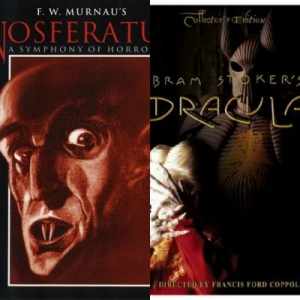
The obsession with the supernatural is not new by any means; stories of the undead, blood suckers, and creatures of the night have been passed down for centuries. Around the time that cinema and film made way into history, Bram Stoker published his Gothic horror novel Dracula – a story of romance, lust, desire, and the blood-thirsty vampire Count Dracula. Since the populous of the novel, society often associates vampires with Dracula and Dracula as a suave, wealthy, and manipulative night creature. The story of the Count has now caused the creation and adaptation of numerous movies including two – generations apart – that have scared and enticed audiences around the world: Friedrich Murnau’s 1922 film Nosferatu and Francis Coppola’s name based movie Bram Stoker’s Dracula. These two works play with different techniques and social commentary based on the time in which they were filmed making them similar but also very different within the classification of the horror genre.
The Films
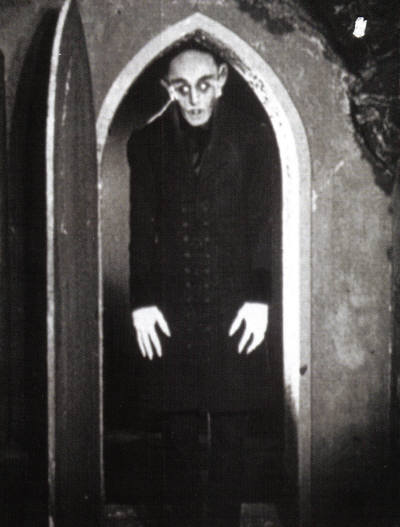
Friedrich Murnau’s film Nosferatu is credited as being the first adaptation of Stoker’s horror novel, and it is purely an adaptation. Due to the fact that Murnau did not own the rights to Dracula, the names of characters were changed, but the plot line remained generally the same as the novel. The film begins with Ellen and Hutter – Jonathan Harker and Mina Murray in the novel – embracing and showing their devotion to one another. Hutter, in a scene shortly after, is tasked with going to Transylvania to sell a client, Count Orlok, the home across from Hutter. The protagonist reluctantly obliges and makes his way toward what the text image refers to as “the land of phantoms” 1. On his journey, Hutter makes reference to the Count with a group of locals who are visibly terrified by the name and warn the young man of his host’s character, but he remains entirely optimistic about the endeavor. Upon arrival, the audience witnesses along with Hutter the ugly creature that is Count Orlok; “loomingly thin, with long predatory arms culminating in claws, the two front teeth protruding like a rodent’s, and between pointed ears a pale bald head like a bare skull, Nosferatu monstrously suggests a cross between a human skeleton and a rat” 2. Orlok walks slowly in the presence of his prey, his hands always held at chest height ready to grab the nearest neck. The interactions between Hutter and the Count are minimal but the young man begins to fear the mysterious Orlok after falling victim to mysterious behavior. After the affairs are in order, Orlok leaves Hutter in his castle and travels by sea to England to his new home and his quest for blood continues. He arrives, after killing all on board the ship, and his ultimate goal is to find Ellen whom he caught a glimpse of in a photo Hutter brought with him. The young protagonist makes his way back to England as well, able to spend just a brief night with his wife before she is killed by the Count and Orlok is vanquished by the rising sun.
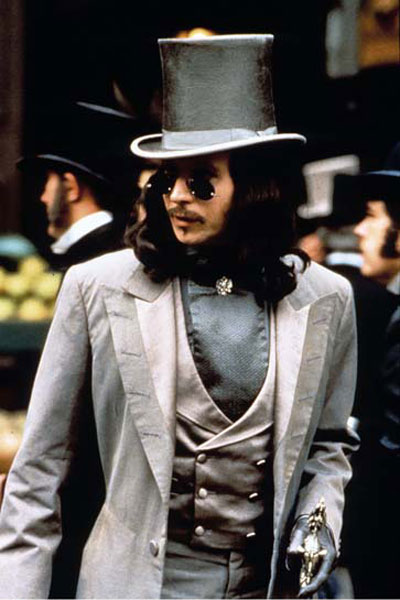
Flash forward seventy years to 1992: Jeffery Dahmer pleads guilty but claims he was mentally unstable; Bill Clinton wins the presidential election; the predicted end of the world does not happen; and Francis Coppola releases Bram Stoker’s Dracula to the public. The movie is a more similar adaptation to Stoker’s novel, using the same names and three intertwined plot structure – Jonathan’s point of view, Mina’s journal, and Dr. Seward’s notes. The film opens with an establishing scene to help tie in the events of the movie in which the audience witnesses the creation of Count Dracula (also referred to as Prince Vlad). Time progresses in the next scene where Jonathan Harker and Mina Murray are introduced. Jonathan is tasked with assisting in the affairs and relocation of a Count Dracula in Transylvania after the previous investor went mad from his time in the country. Jonathan accepts apprehensively because he needs the money in order to support his future bride and family – or so he thinks. While traveling to Transylvania, there is a great suspense and feeling of danger as wolves stalk Jonathan’s carriage. He arrives safely, none the less, and is greeted by Count Dracula. The Count in this movie, although pale, is more humanistic and regal looking, and adorned in a blood red robe. He speaks eloquently and with a thick Romanian accent. During their first meeting, the audience can hear the drip drop of water, as if the Count’s castle were in a deep underground cave. The rest of the castle, however, looks like a traditional stone castle. Through the rest of the film Jonathan realizes there is something more to the Count and the goal turns to saving Mina from the blood sucking vampire. Unfortunately, Mina’s fate is sealed with the undead as she is seduced by Prince Vlad – the Count’s younger persona.
Film Techniques
Mood and Shadow
There is an obvious time gap between these two works of adaptation but that doesn’t make them entirely different. It’s apparent that they come from different times of film technology – Nosferatu is from early black and white cinema and silent apart from the overlaid soundtrack; Bram Stoker’s Dracula is in color and full of sound. The film techniques witnessed in these two pieces reflect similarities. Both are heavily shadowed and relatively dark to reflect a mysterious and ominous mood. The style of this technique helped to define and place Nosferatu within the German expressionist and Weimar cinema movements. German expressionism itself “gave birth to [a] new cinematic genre: the Gothic horror movie” 3. Not only was the Gothic horror genre created with the rise of German expressionism, films within the movement touched on topics of a post war society and did so with low budget sets and technology. Nosferatu was “shot on a limited budget with only one camera, [it] uses light, shadow, time, movement and suspense to portray horror, rather than complex sets or special effects” 4. The shadows play a huge role within the film for they make Orlok look far larger, more menacing, and terrifying; it shows the fear of impending doom.
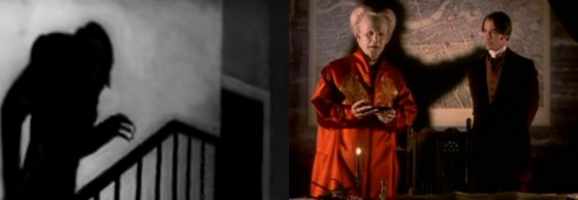
In Coppola’s Dracula there is an overemphasized use of shadow and silhouette to create the mood of horror along with backdrops of violent reds and blues. Just within the first few sequences of the movie one can notice the prominent techniques and images that play throughout the rest of the film – “the silhouetted figures dangling from stakes, the bleeding cross, the swirling overheads, the clever match cuts/dissolves, the backdrops, the miniatures, the matte work, the superimposed eyes in the sky” 5. To create even more drama and suspense within Coppola’s movie they used special effects to move Dracula’s shadow apart from the real actions. During the scene where Dracula and Jonathan are discussing England, the Count’s shadow makes menacing movements toward Jonathan, looking as if the shadow were grabbing the protagonist’s neck. Much of the movie is incredibly dark, most scenes taking place at night, but the few scenes that are brighter show muted colors unless the focus is on blood or anything red. After all, vampires love blood.
The Old and New
Not only do these works of cinema use shadow and light to reflect the mood of the story, the way in which the scenes are shot and transitioned establish a sort of urgency or even playful moments like those between Mina and Lucy (Mina’s closest friend). The majority of the shots within Murnau’s Nosferatu are quick and the jumps between scenes or even person to person are swift. The camera itself does not move so movement is shown with the actors, scenes of travel, and of course Orlok’s looming shadow. Coppola uses similar quick cuts between scenes but also uses fading images and overlays. Towards the end of the film, Coppola also pays homage to the cinematograph when Mina and Prince Vlad are first introduced:
In this sequence, which opens with its obvious homage to the medium (the appeal to come to the Cinematograph, the film appearing to run at the speed of an old silent), a young-looking Dracula will see in daylight for the first time in centuries the “living” image of his wife, who had committed suicide when she was deceived into believing that her husband had been killed. A quick. old-fashioned courtship/seduction is played out on the street between Mina (Jonathan Harker’s fiance) and the Count. He is a foreigner and wants her to give him directions to this “wonder,” the Cinematograph. […]
In front of the moving picture, Dracula marvels at the wonders of science, and Mina responds that compared to Madame Curie (picking up the light-within-darkness theme) this is certainly not science. On the screen within the screen we see a train approaching as Dracula, standing close to Mina, says, “Don’t be afraid.” Here words and image fuse to form a diegetic and nondiegetic context. Do not be afraid of me (Count Vlad) because I love you and because I, too, like the oncoming (Lumiere) train, am only an image on film 6.
Coppola has a knack for mingling old and new throughout his rendition of the classic vampire tale, “he references the earlier Dracula movies and the techniques of silent film, […], because he believes in the magic of film, its ability to seduce us with its wonder, to return us to a state of awe 7.
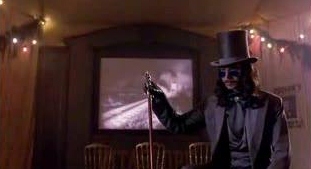
Social Context
Other than how they were filmed and what techniques were used to create certain moods and atmospheres, both pieces touch on social and political topics. My first thought when comparing the two films side by side was how extremely pornographic Coppola made his adaptation. The three vampire wives of Count Dracula, during the scene in which Jonathan is seduced by them, are bare chested and convey a state of ecstasy. Lucy’s character is entirely sexual and lustful. Although she is engaged, she tantalizes every man she meets. There’s an incredible use of sexual innuendo in a scene where “[Lucy] reaches into [Quincey’s] waistcoat: ‘Oh Quincey, please let me touch it! It’s so big!’ and pulls out an incredibly sized hunting knife” 8.
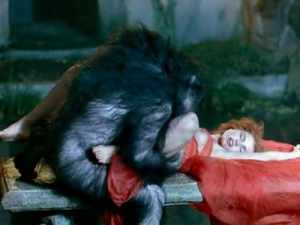
When Lucy and Mina – separately – are bitten they go through fits of orgasmic spasms, feeling the change inside them; “in Coppola’s Dracula, sex is blood, blood is lineage, and lineage is romantic love” 9. While Coppola is blatantly obvious with sex and sexuality in his Dracula, Murnau’s Nosferatu creates subtle suggestions to sex through interpretation of vampires and women in general. The most visually sexualized moment of the film is at the bitter end after Ellen has been bitten, she is moving in such a way that suggests point of orgasm and ecstasy. The multitude of Dracula influenced films in the past century have portrayed Dracula and vampires as sexual beings but the earliest account is not so. “The lone vampire in Nosferatu stands not for the threat of sexuality, however, but for the threat of death,” and “If vampirism in Dracula is a metaphor for sexuality, sexuality in the final scene of Nosferatu is a metaphor for the self-embracing, anxiously yet freely, the condition of ‘being-toward-death’” 10.

Movies and films based on books can go in all kinds of directions. Although names were changed in Murnau’s Nosferatu, it followed a very even and identical plot line to Stoker’s Dracula. Murnau was able to create his vision more successfully due to the introduction of Weimar cinema – darkness was acceptable and immortality was craved. With the leaps and bounds made in technology, Coppola was able to take the novel further while still respecting it by using techniques and ideas similar to early cinema. Due to the fact that sexuality was more embraced, Coppola took female characters to the next level of sexuality and lust. Both works of cinema use intense shadow and darkness, quick cuts, and explicit sexuality to bring the story of the famous vampire to life and although they have their differences, they’re similar in the fact that they made their mark in cinematic history.
Works Cited
- Nosferatu. Dir. Friedrich Murnau. 1922. Netflix. Web. ↩
- Perez, Gilberto. “Nosferatu.” Raritan 13.1 (1993): 1. EBSCO MegaFILE. Web. 26 Apr. 2015. ↩
- Llewellyn, Jennifer, Jim Southey, and Steve Thompson. “Weimar Cinema.” Alpha History. N.p., 17 July 2012. Web. <http://alphahistory.com/weimarrepublic/weimar-cinema/>. ↩
- Llewellyn, Jennifer, Jim Southey, and Steve Thompson. “Weimar Cinema.” Alpha History. N.p., 17 July 2012. Web. <http://alphahistory.com/weimarrepublic/weimar-cinema/>. ↩
- Whalen, Tom. “Romancing Film: Images Of Dracula.” Literature Film Quarterly 23.2 (1995): 99. EBSCO MegaFILE. Web. 26 Apr. 2015. ↩
- Whalen, Tom. “Romancing Film: Images Of Dracula.” Literature Film Quarterly 23.2 (1995): 99. EBSCO MegaFILE. Web. 26 Apr. 2015. ↩
- Whalen, Tom. “Romancing Film: Images Of Dracula.” Literature Film Quarterly 23.2 (1995): 99. EBSCO MegaFILE. Web. 26 Apr. 2015. ↩
- McGunnigle, Christopher. “My Own Vampire: The Metamorphosis Of The Queer Monster In Francis Ford Coppola’s Bram Stoker’s Dracula.” Gothic Studies 7.2 (2005): 172-184. EBSCO MegaFILE. Web. 26 Apr. 2015. ↩
- Corbin, Carol, and Robert A. Campbell. “Postmodern Iconography And Perspective In Coppola’s Bram Stoker’s Dracula.” Journal Of Popular Film & Television 27.2 (1999): 40-48. Art Full Text (H.W. Wilson). Web. 26 Apr. 2015. ↩
- Perez, Gilberto. “Nosferatu.” Raritan 13.1 (1993): 1. EBSCO MegaFILE. Web. 26 Apr. 2015. ↩
What do you think? Leave a comment.










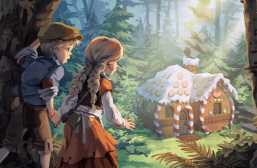
Awesome analysis. I think comparing the two films is very interesting because they represent two sides of depicting a vampire. One is a monster that is creepy to look at, and the other is a monster, but in the form of a sexy man.
Great article! There’s definitely an interesting connection between these films and the culture surrounding them, but I think you’re right to compare the two because it makes the cultural connection much more obvious. Nosferatu’s culture was still using monsters as a symbol for “the outsider,” the one who can’t be trusted. While the culture surrounding Coppola’s Dracula was focused on the monsters being within, hence the sexualization of the creature.
You’ve captured the cinematic legacy of these films in the most comprehensive way with this meticulous read! Loved it!
pure (true) vampire stuff right here
I have loved Nosferatu since I experienced it late night on TV some time ago. I watched it on a B&W portable and was impressed by its style, cinematography and invention.
I have to admit that even though Nos is an old movie I liked it because it is considered one of the must see horror movies in order to understand the history of horror.
two highly influential piece of work
It is the shadow aspect of the Vampires.The Jekyll of Jekyll and Hyde.
Nosferatu is the first Dracula movie preceding the Dracula movie from Universal Studios.
Nosferatu is the granddaddy of every horror movie and one of the best.
Bram Stoker’s book is a very enjoyable read. However, I think the movies have yet to capture the real essence of his book. For a good laugh, try Mel Brooks Dead and Loving it. It pokes fun at almost all the Dracula films yet made.
Great article! Vampires have been fascinating humans for a long time — the intertwined themes of sex and death are compelling to us. This is a great analysis of why two different versions of this story work. Thanks!
Nosferatu movie is equal to Dracula 1931.
The atmosphere in Nosferatu just draws me in with the shades of black and white acting as the color scheme, allowing me to focus on the film and not be distracted by random colors.
Really enjoyed this analysis, great work on what is usually a well-tread topic!
Interesting analysis! It speaks to the taboo nature of human sexuality. The dark side of our subconscious must be presented in palatable terms for mass consumption.
Copyright issues didn’t allow the director to use the Dracula name even though the movie is clearly based on the Dracula novel.
Great film analysis! The use of supernatural creatures in media and what they represent is always so fascinating to look at. Especially vampires who were originally used to represent the Victorian fear of foreignness and death, and as time went on, sexuality.
Great article. NOSFERATU’s cinematic power, as well as its cinematic existence, both reflect its own story.
Great article.Though I haven’t watch Nosferatu,I have wacthed Dracula
And it’s great movie.
I am a fan of vampires as well,so this article really made me give you a thumb’s up!!
I watched Dracula directly after reading the book, and I was very disappointed. The book version of Mina was this wonderful, strong woman, and I couldn’t help but fall in love with her. In the film, she is reduced to a hyper-sexual teenager in a grown-up’s body who is perpetually a victim, events happening to her that are continually beyond her control. Pretty disappointing, but a lot to like in the rest of the film.
Excellent work!
The historical context was helpful in understanding the towards-death/awe notion for me. I haven’t seen the films but this has piqued my curiosity to do so!
I’ve always liked how the vampire in literature has changed to follow our fears. Dracula was a representation of the fears that people had at the turn of the 20th century with breaking the social norms of the day. He was a suave, sexy creature who enticed women into his clutches. These days however that isn’t something that is very scary. Sexuality is very open nowadays, especially when compared to the standards of the 20th century. As a result the vampire changed.
In I am Legend vampires represented the fear of both post apocalyptic society and humanity consuming itself with expansion. In the movie Daybreakers vampires explore our fear of GMO foods and a world where humanity is no longer on the top of the food chain.
I really enjoyed this article and I’m glad that others are interested in analyzing the vampire too 🙂
Nosferatu is still super creepy and well made for the type of medium and tech they had at the time!
I never watched Nosferatu, only Shadow of a vampire with John Malkovich (which was a rather weird and fun movie), but from what I remember the basic plot of the movie was the shooting of Nosferatu and how they played with light because basically that was the only “special effect” they could ahve in the movie. Coppola’s Dracula is high sexualized (something I noticed only after re-watching the movie as an adult). All in all someone decided long time ago that there should be something sexy about sucking blood, I don’t really get it but whatever. Great article.
I never watched Nosferatu, only Shadow of a vampire with John Malkovich (which was a rather weird and fun movie), but from what I remember the basic plot of the movie was the shooting of Nosferatu and how they played with light because basically that was the only “special effect” they could have in the movie. Coppola’s Dracula is high sexualized (something I noticed only after re-watching the movie as an adult). All in all someone decided long time ago that there should be something sexy about sucking blood, I don’t really get it but whatever. Great article.
Nicely thought-out. However, I always get uneasy when someone uses the word “diegetic.” 😉
Good comparison, although I wonder if Nosferatu can’t more easily be compared to the vampire of Polidori. That is not to say that there is anything wrong with your insightful analysis, but I think the monstrous aspects of Nosferatu are more akin to the creepy feeling one gets when reading Polidori’s short story